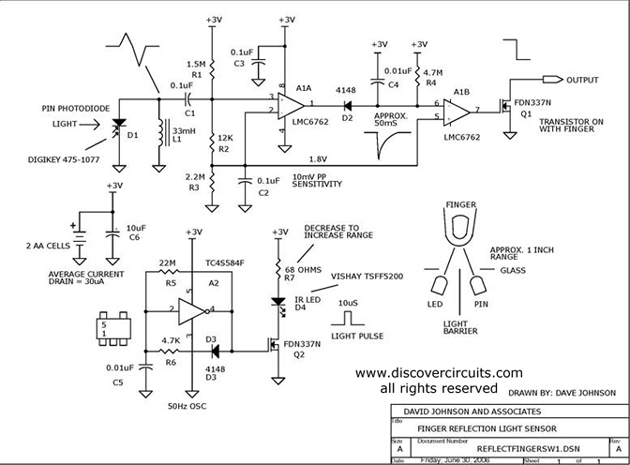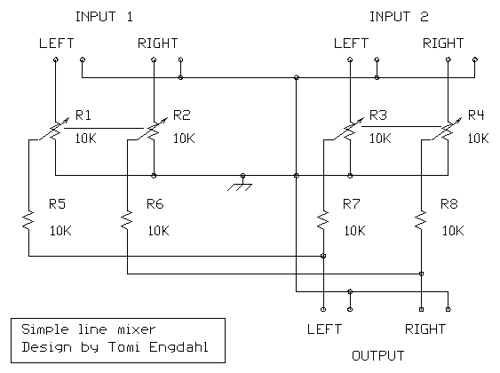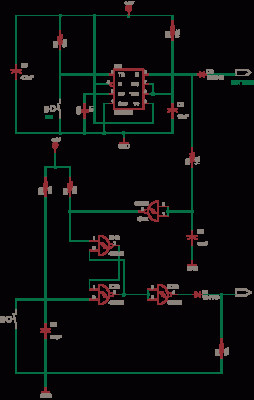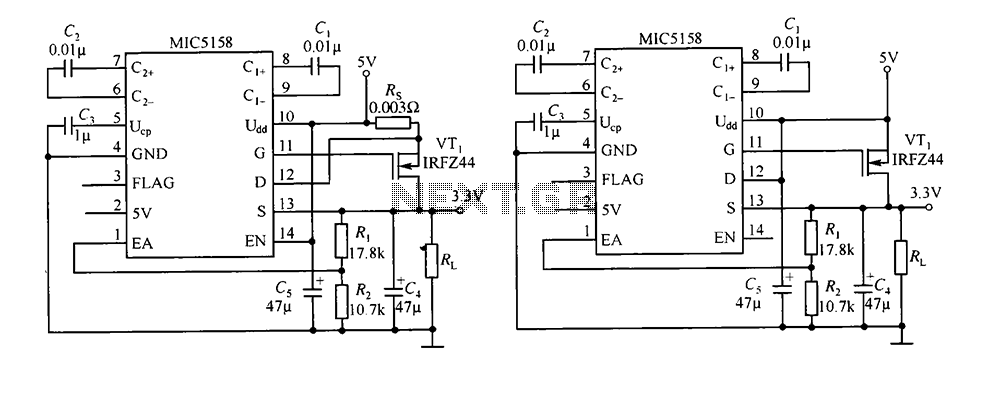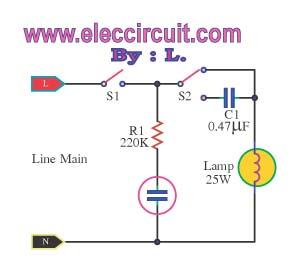
Light Dimmers Projects & Circuits
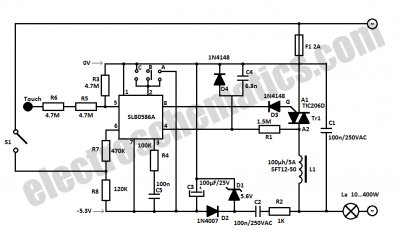
This light dimmer control features active timing capacitor reset or AC line zero-crossing synchronization. The 13 additional components are common and cost less than $2. Performance at the low end is exceptionally smooth and snap-free, even better than the TRIAC dimmer that avoids the snap-on phenomenon associated with passive reset designs. The snap-on issue is well-known with inexpensive TRIAC dimmers commonly used for incandescent lamps, where turning the potentiometer until the light turns on (snaps) and then reducing the setting can cause the light to extinguish, necessitating a repeat of the process. Additionally, there is a mention of a light dimmer switch that can be used to adjust the speed of a 220V fan, which was suggested as a viable option. This Arduino light dimmer project is inspired by a comment from Doug Hitchcock, who required a lamp dimmer capable of cascading from one lamp to the next (up to four lamps). When a switch is closed, the first lamp gradually increases in brightness from dim to 100%. Once the first lamp reaches full brightness, it triggers the second dimmer circuit. This light dimmer is designed to control the intensity of 12V light bulbs using a 555 timer configured as an astable multivibrator. The output pulses from pin 3 control VMOS transistors such as BUZ20, BUZ72, or 10N10, with a maximum dissipated power not exceeding 40 watts. The design allows for the use of the transistor without additional components. This SCR phase control operates similarly to a common TRIAC dimmer but offers several advantages, including increased current capability, robustness, and the elimination of minimum voltage snap-on issues. A complementary symmetrical trigger circuit composed of two programmable unijunction transistors (PUTs) enables the firing of two anti-parallel devices.
The light dimmer control circuit utilizes active timing capacitor reset and AC line zero-crossing synchronization to enhance performance and reliability. The inclusion of 13 low-cost components ensures affordability while maintaining effective functionality. The design's ability to provide smooth dimming performance without the snap-on effect is a significant improvement over traditional TRIAC dimmers, which are often plagued by abrupt transitions in light intensity.
In practical applications, this dimmer can be effectively used for both lighting and fan speed control. The mention of utilizing a standard light bulb dimmer for a 220V fan demonstrates its versatility. The cascading feature of the Arduino dimmer project allows for multiple lamps to be controlled sequentially, providing a sophisticated solution for lighting management in larger spaces.
The 555 timer configured as an astable multivibrator serves as the core of the dimming mechanism, generating pulse-width modulation (PWM) signals that control the VMOS transistors. These transistors are capable of handling significant power, up to 40 watts, making them suitable for a variety of lighting applications. The use of PUTs in the trigger circuit further enhances the robustness of the design, allowing for reliable operation across different load conditions.
Overall, this light dimmer control circuit represents an innovative approach to dimming technology, combining affordability, ease of use, and advanced features to meet modern lighting needs.This light dimmer control has active timing capacitor reset or AC line zero-crossing synchronization. The 13 additional components are garden variety and cost less than $2. Performance at the low end is exceptionally smooth and snap-free better even than the TRIAC Dimmer Avoids Snap-ON version that uses a passive reset.
We are all familiar with the snap-on phenomenon of inexpensive TRIAC dimmers that are often used to control incandescent lamps turn the pot until the light comes (snaps) on and then reduce the setting to make it dimmer but don`t turn it too low because the light extinguishes and then the process must be repeated. However, . Hi guys, just a short article about a light dimmer switch that I opened a few days ago. I wanted a way to adjust the speed of a 220V fan and a friend of mine told me that I can use a regular and cheap light bulb dimmer for this.
I told him it might not work but he was so sure about it so I had to test it and of course it. This Arduino lights dimmer project is based on Doug Hitchcock`s comment: I need to have a lamp dimmer that can cascade from one lamp to the next (up to 4 lamps). Basically, when you close a switch, the first lamp begins to light from dim to 100%. Once lamp #1 reaches 100%, then that triggers dimmer circuit #2. This light dimmer is used to dim the intensity of 12V light bulbs using the well-known 555 timer that is configured as an astable multivibrator.
The pulses from pin 3 are used to control the VMOS transistor BUZ20, BUZ72 or 10N10. The maximum dissipated power must not exceed 40 watts. You may use the transistor without a. This SCR phase control works much like the common TRIAC dimmer, but has numerous advantages including increased current capability, robustness and absence of minimum voltage snap-on. A complementary, symmetrical trigger circuit consisting of two PUTs (programmable unijunction transistors) enables firing of two anti-parallel.
🔗 External reference
The light dimmer control circuit utilizes active timing capacitor reset and AC line zero-crossing synchronization to enhance performance and reliability. The inclusion of 13 low-cost components ensures affordability while maintaining effective functionality. The design's ability to provide smooth dimming performance without the snap-on effect is a significant improvement over traditional TRIAC dimmers, which are often plagued by abrupt transitions in light intensity.
In practical applications, this dimmer can be effectively used for both lighting and fan speed control. The mention of utilizing a standard light bulb dimmer for a 220V fan demonstrates its versatility. The cascading feature of the Arduino dimmer project allows for multiple lamps to be controlled sequentially, providing a sophisticated solution for lighting management in larger spaces.
The 555 timer configured as an astable multivibrator serves as the core of the dimming mechanism, generating pulse-width modulation (PWM) signals that control the VMOS transistors. These transistors are capable of handling significant power, up to 40 watts, making them suitable for a variety of lighting applications. The use of PUTs in the trigger circuit further enhances the robustness of the design, allowing for reliable operation across different load conditions.
Overall, this light dimmer control circuit represents an innovative approach to dimming technology, combining affordability, ease of use, and advanced features to meet modern lighting needs.This light dimmer control has active timing capacitor reset or AC line zero-crossing synchronization. The 13 additional components are garden variety and cost less than $2. Performance at the low end is exceptionally smooth and snap-free better even than the TRIAC Dimmer Avoids Snap-ON version that uses a passive reset.
We are all familiar with the snap-on phenomenon of inexpensive TRIAC dimmers that are often used to control incandescent lamps turn the pot until the light comes (snaps) on and then reduce the setting to make it dimmer but don`t turn it too low because the light extinguishes and then the process must be repeated. However, . Hi guys, just a short article about a light dimmer switch that I opened a few days ago. I wanted a way to adjust the speed of a 220V fan and a friend of mine told me that I can use a regular and cheap light bulb dimmer for this.
I told him it might not work but he was so sure about it so I had to test it and of course it. This Arduino lights dimmer project is based on Doug Hitchcock`s comment: I need to have a lamp dimmer that can cascade from one lamp to the next (up to 4 lamps). Basically, when you close a switch, the first lamp begins to light from dim to 100%. Once lamp #1 reaches 100%, then that triggers dimmer circuit #2. This light dimmer is used to dim the intensity of 12V light bulbs using the well-known 555 timer that is configured as an astable multivibrator.
The pulses from pin 3 are used to control the VMOS transistor BUZ20, BUZ72 or 10N10. The maximum dissipated power must not exceed 40 watts. You may use the transistor without a. This SCR phase control works much like the common TRIAC dimmer, but has numerous advantages including increased current capability, robustness and absence of minimum voltage snap-on. A complementary, symmetrical trigger circuit consisting of two PUTs (programmable unijunction transistors) enables firing of two anti-parallel.
🔗 External reference
Warning: include(partials/cookie-banner.php): Failed to open stream: Permission denied in /var/www/html/nextgr/view-circuit.php on line 713
Warning: include(): Failed opening 'partials/cookie-banner.php' for inclusion (include_path='.:/usr/share/php') in /var/www/html/nextgr/view-circuit.php on line 713
